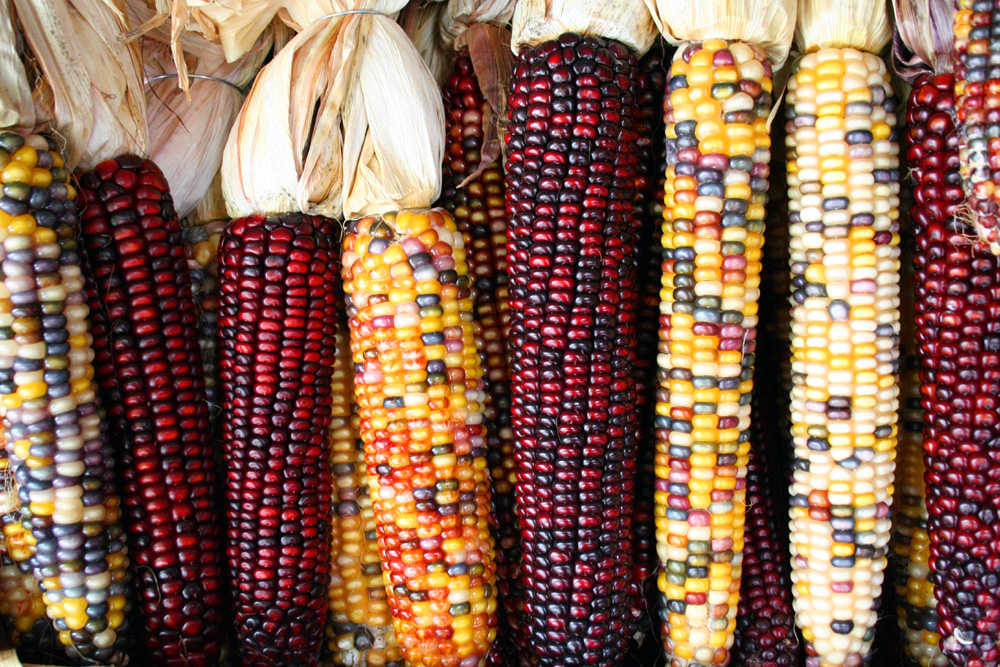By Mark Kinver, BBC, February 25, 2013
New evidence strengthens the argument that maize played
an important role in ancient Peruvian civilisation 5,000 years ago, a study has
said.
Samples taken from pollen records, stone tool residues
and fossilised faeces suggest the food crop was actively grown, processed and
eaten.
The authors say it adds more weight to the argument that
Andean society was agricultural, not maritime-based.
"If you look at the origins of civilisations around
the world - from Egypt to China and India - they are all based on
agriculture," explained co-author Jonathan Haas from The Field Museum,
Chicago.
However, he told BBC News that an idea emerged that
Andean early civilisation was different, and evolved from exploiting marine
resources.
Power struggle
He told BBC News: "That theory has now been the
dominant theory since the mid-1970s but more data has become available saying
that there are not just [coastal] sites but there are some big inland sites
too.
"People started to find corn at the inland sites,
and the argument was that the corn was really a condiment and used for
ceremonial purposes.
An
agricultural system would allow leaders to exert the power needed to develop
complex societies
Dr Haas said that the findings from the team's study
"topples that notion".
In their paper, the team explained that the first stage
of identifying the botanical remains taken from the archaeological sites was
the analysis of the macrobotanical (visible to the naked eye) artefacts.
"Analyses of hundreds of samples… revealed that
macroscopic remains of maize - including kernels, leaves, stalks and cobs -
were rare," they wrote.
They added that the reason for the lack of such samples
at the sites has "yet to be resolved", but the lack of such remains
could not be seen as evidence of the absence of maize.
"It is also possible that the lack of macroscopic
remains is a reflection of limited excavations at these sites, given that the
more extensive excavation of sites… did yield much more macroscopic evidence of
maize."
Microscopic bounty
The team commented that the scarcity of macroscopic
remains was in marked contrast to an abundance of microscopic evidence of maize
in the guise of maize pollen samples collected from soil at the sites.
Although there was a possibility of contamination from
modern sources, the team said that there were three factors that weighed
against this.
"First, modern maize pollen grains are larger and
turn red when stain is applied, whereas ancient grains do not," they said.
"Second, extraction of pollen samples followed
standard archaeological guidelines and all crew members were trained in taking
pollen samples.
"Third, the modern samples all contained pollen
from a plant not found in the area prehistorically."
Dr Haas said that the pollen record gathered from the
study sites was unequalled, with the data being accessed by other scientists in
their research projects.
Other artefacts the team examined included 14 stone
tools, which were radiocarbon-dated to between 2090 and 2540BC.
"Eleven of the 14 tools had predominantly or
exclusively maize starch grains on the working surfaces, and two working
surfaces had maize phytoliths (mineral excretions by the plant)," they
recorded.
The researchers also found samples of sweet potato and
bean starch grains.
The team also recovered 62 coprolites (fossilised
faeces), of which 34 were human specimens.
They wrote that 69% of the specimens contained maize
starch grains, the dominant source of starch in the diet at that time.
Dr Haas observed: "Maritime resources were
important as it was their primary source of protein. But in each one of those
coprolites, there was, on average, half an anchovy - that is not your diet,
that is a condiment.
"In contrast, finding corn, beans, sweet potato and
a number of other things in the diet - that is an agriculturally-based
society."
He added that a vibrant agriculture system would result
in a surplus of food, allowing the societal leaders to attract outsiders to the
area and exert power.
The team wrote: "It was during this time that large
permanent communities were settled, monumental architecture first appeared on
the landscape, agriculture was more fully developed and indicators of a
distinctive Andean religion are manifest in the archaeological record."

No comments:
Post a Comment